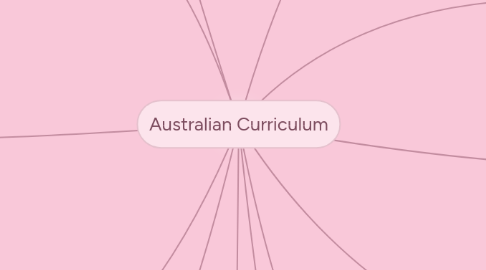
1. Objectives and Aims
1.1. Objectives: Specific statements of education intention that portray both general and specific outcomes.
1.2. Aims: General statements that provide intent to educational action. Generally uses words including: appreciate, know, learn and understand.
2. Subjects
2.1. Mathematics Strands include problem solving, reasoning, fluency and understanding
2.2. English Strands include Language, Literature and Literacy
2.3. Science Strands include science as a human endeavor, science understanding and science inquiry skills
2.4. The Arts Includes dance ,drama, media arts, music and visual arts
2.5. Technologies Includes design and technologies and digital technologies
2.6. Health and Physical Education Develops, enhances children's attitudes and values towards a healthy lifestyles
2.7. Humanities and social science Consists of history and geography
3. General Capabilities
3.1. There are seven general capabilities underpinning the Australian Curriculum. These include:
3.1.1. - Intercultural understanding
3.1.2. - information & communication technology capability
3.1.3. - Ethical behavior
3.1.4. - Literacy
3.1.5. - Numeracy
3.1.6. - Critical and creative thinking
3.1.7. - personal and social capability
4. Curriculum Priorities
4.1. Addressed through learning areas that are applied in content descriptors
4.1.1. Aboriginal and Torres Strait Islander
4.1.2. Asia and Australia's engagement with Asia
4.1.3. Sustainability
5. Content Descriptors
5.1. Content descriptors vary for every year level. They are assessed through Knowledge and understanding and Processes and production skills. Both of these have sub descriptors that are used to help students and teachers.
5.2. Primary
5.2.1. Foundation to year 2
5.2.2. Year 3 to 4
5.2.3. Year 5 to 6
5.3. Secondary
5.3.1. Year 7 to 8
5.3.2. Year 9 to 10
6. Strands
6.1. Processes and Production Skills The development and use of technologies and design
6.2. Knowledge and Understanding Skills required to create design solutions
6.3. Designs and Technology
6.3.1. knowledge and understanding
6.3.1.1. Technologies and society
6.3.1.2. Technologies contexts
6.3.1.3. Engineering principles and systems
6.3.1.4. Food and fibre production
6.3.2. processes and production skills
6.3.2.1. investigating
6.3.2.2. generating
6.3.2.3. producing
6.3.2.4. evaluating
6.3.2.5. collaborating and managing
6.4. Digital Technology
7. Achievement Standards
7.1. The quality of learning demonstrated by the students within a particular subject
7.2. Achievement standards are included in all subjects including:
7.2.1. - English
7.2.2. Mathematics
7.2.3. - Humanities & social Studies
7.2.4. - The Arts
7.2.5. - Physical Education
